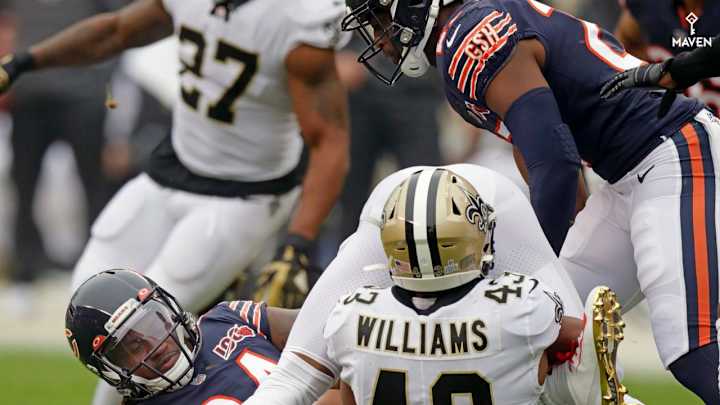Bears Proved Onside Kick Rule Change Unnecessary

On successive onside kick attempts against New Orleans last season, the Bears' Cordarrelle Patterson and Ben Braunecker made recoveries to fuel a late comeback in a blowout loss to New Orleans.
So much for the idea it's impossible to recover onside kicks now with the rules in place prohibiting players from going in motion or loading up on one side of the kicker.
Upon further review, however, Braunecker's didn't count because he was ruled on replay to have gone out of bounds without re-establishing position on the field of play.
Actually, it has been more difficult to recover onside kick attempts since the rule changes and it's a reason the league is going to consider a rule change to allow teams the option of a fourth-and-15 gamble from their own 25-yard line in place of an onside kick try.
The difference hasn't been all that much, though. The actual numbers league-wide weren't as drastically weighted against in 2019 as in 2018, which was the first year of the rule. It might suggest teams have adjusted and figured out how to get onside kicks in spite of the rules.
Under old rules, 21% of onside kicks were recovered. Last year 13.2% of onside kicks were recovered by the kicking team, while in 2018 right after the change only 8% were recovered by the kicking team.
If 13.2% is closer to the norm, then why even change the rule? Does a team gambling with an act like an onside kick at game's end when they're desperate really deserve better than a 13% chance to keep the ball? Shouldn't what happened through the first 58 or 59 minutes of the game carry more weight anyway?
If a fourth-and-15 play has about a 16.8% chance of succeeding and the onside kick 13.2%, it's not that much of a difference. So why even bother with a rule change?
The competition committee actually did want the change last year and passed a fourth-and-15 rule recommendation from the 35-yard line but it was rejected by the owners as a group. It was termed "too gimmicky."
Partial seasons of the AAF and XFL 2.0 may have whetted the appetite more, but those less willing to see the wild gimmicky play used might like the rule proposal this year better because it's from the 25-yard line and not the 35 like last year's proposal.
Not only that, but there's an added attachment to the rule. The clock runs during the fourth-down onside attempt at the first down. On the rule last year it didn't run. So this will eat away more at the time the team trying for a comeback has left to rally.
Before, the rule did seem like another heavily slanted attempt to help teams that had no business being helped.
With the ball back another 10 yards and the clock running, it's going to make conversion and then actual comebacks more difficult.
It also brings defense more into the play. Teams with better defenses have better chances to shut down the fourth-down onside plays.
In the end, it wouldn't be surprising if a team trying an actual onside kick would wind up with a better percentage of converting than a team trying for a fourth-and-15.
The vote on this will be interesting just because it does allow for better defenses to have an impact and seal a game, and it also does bring field position into the decision on whether to gamble.
Twitter: BearDigest@BearsOnMaven
